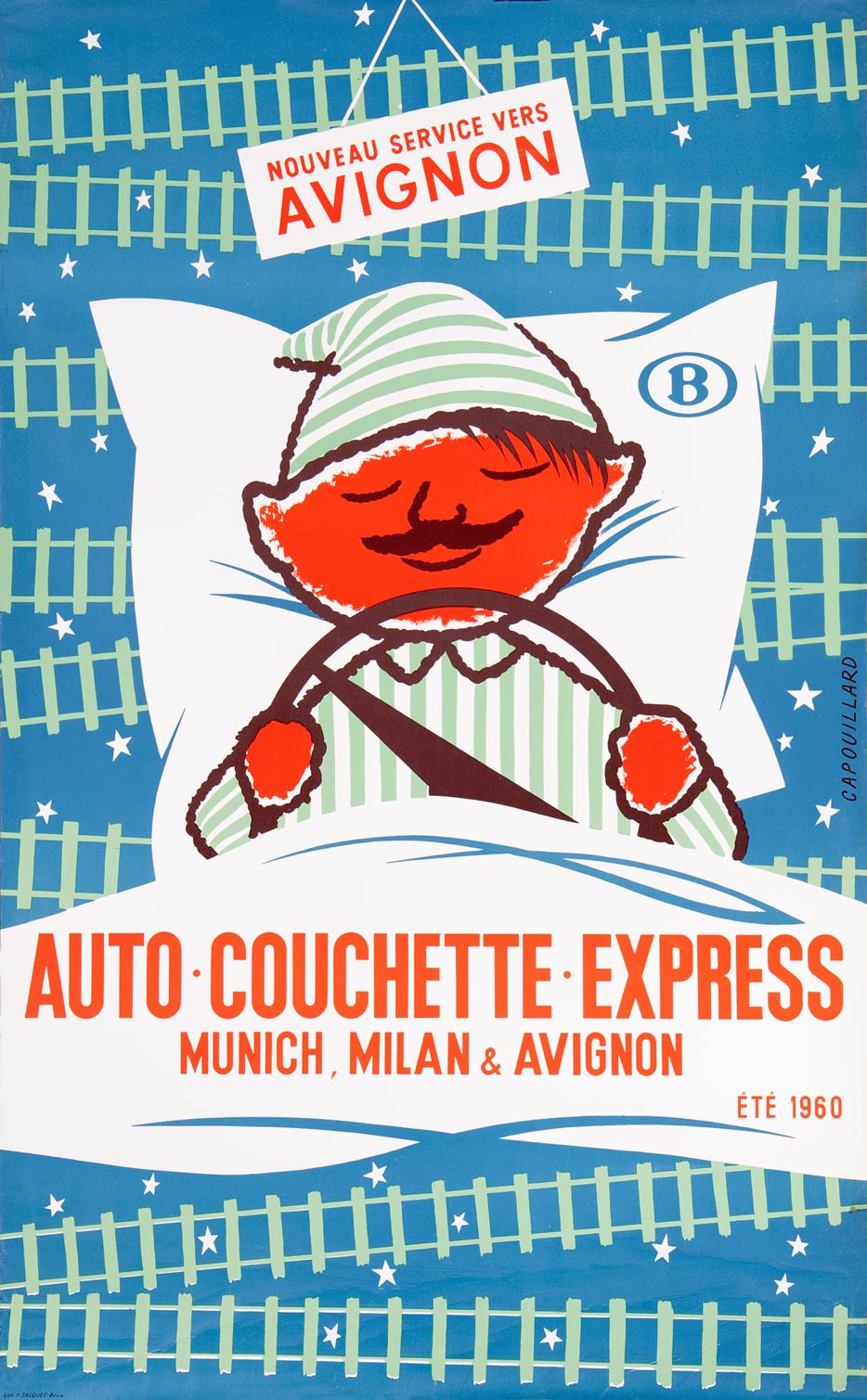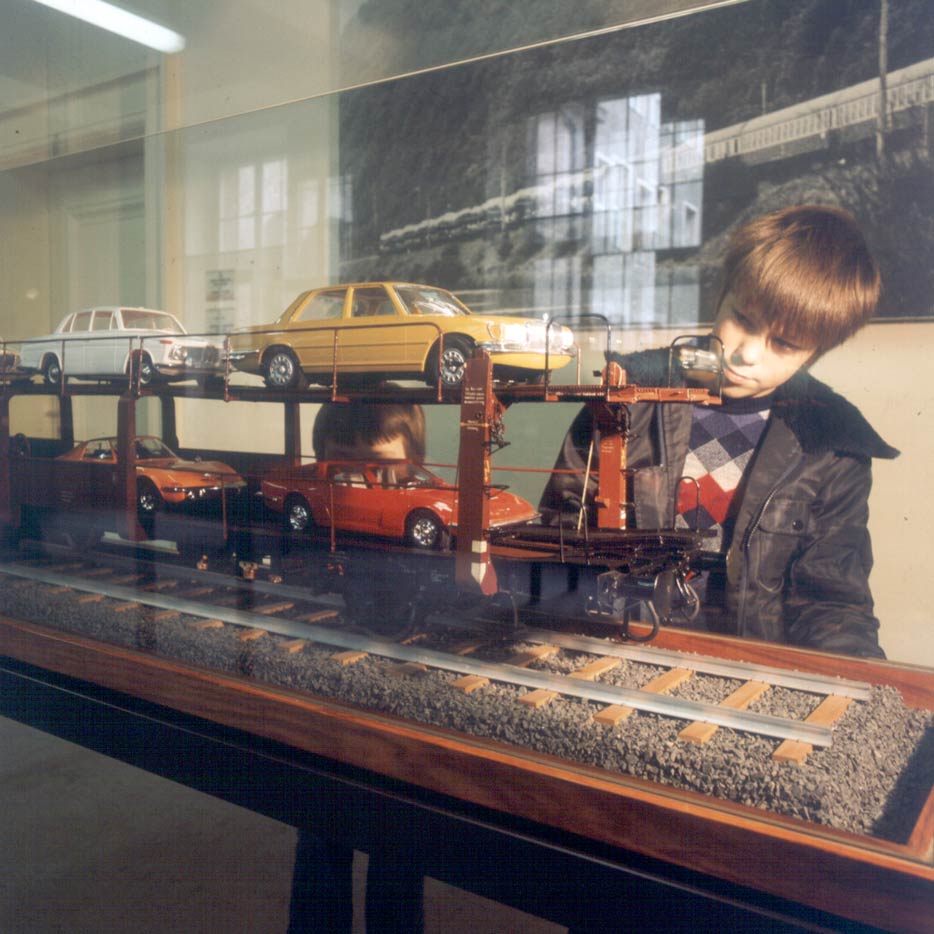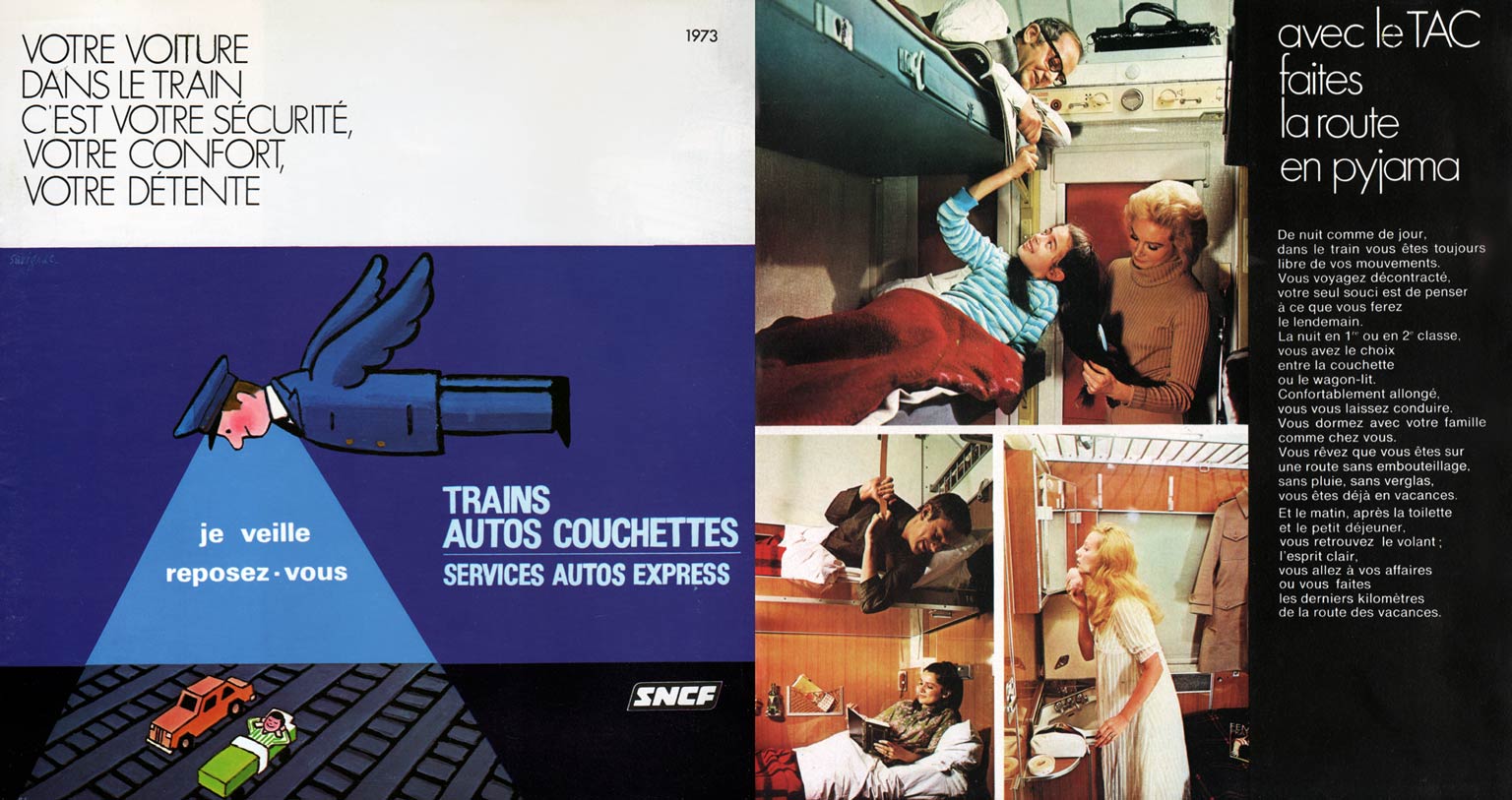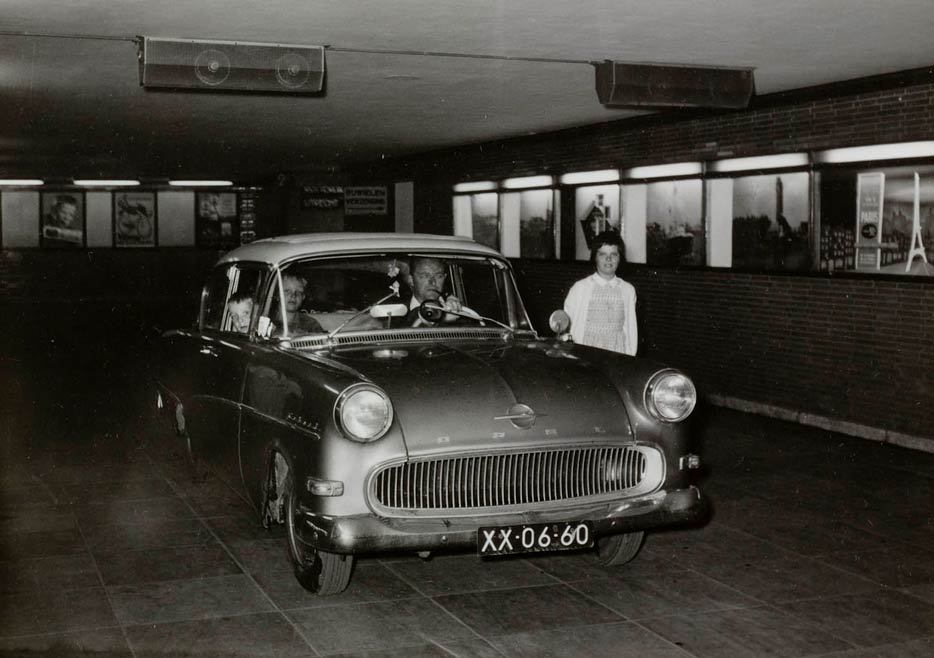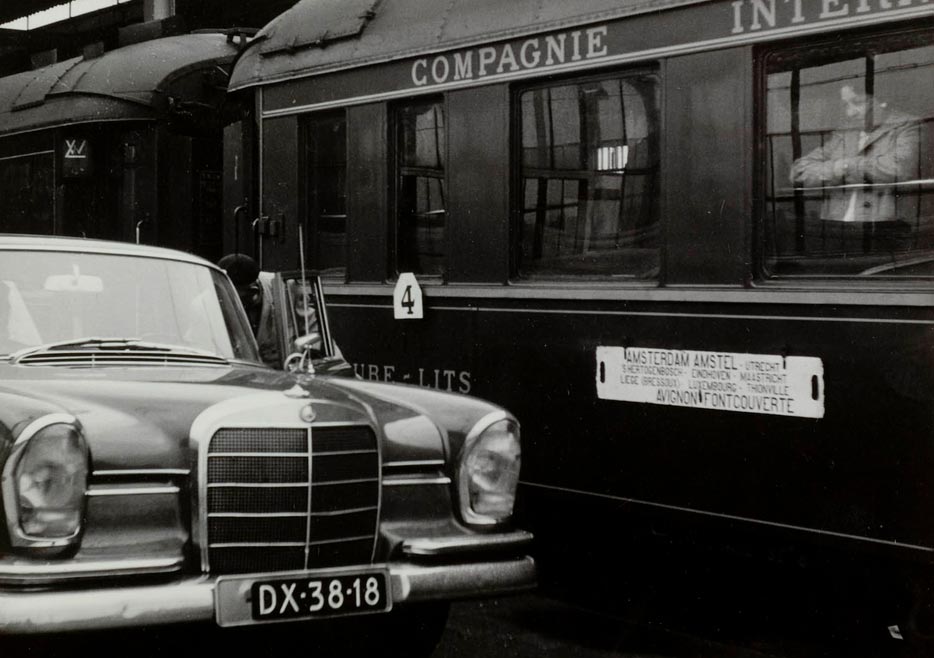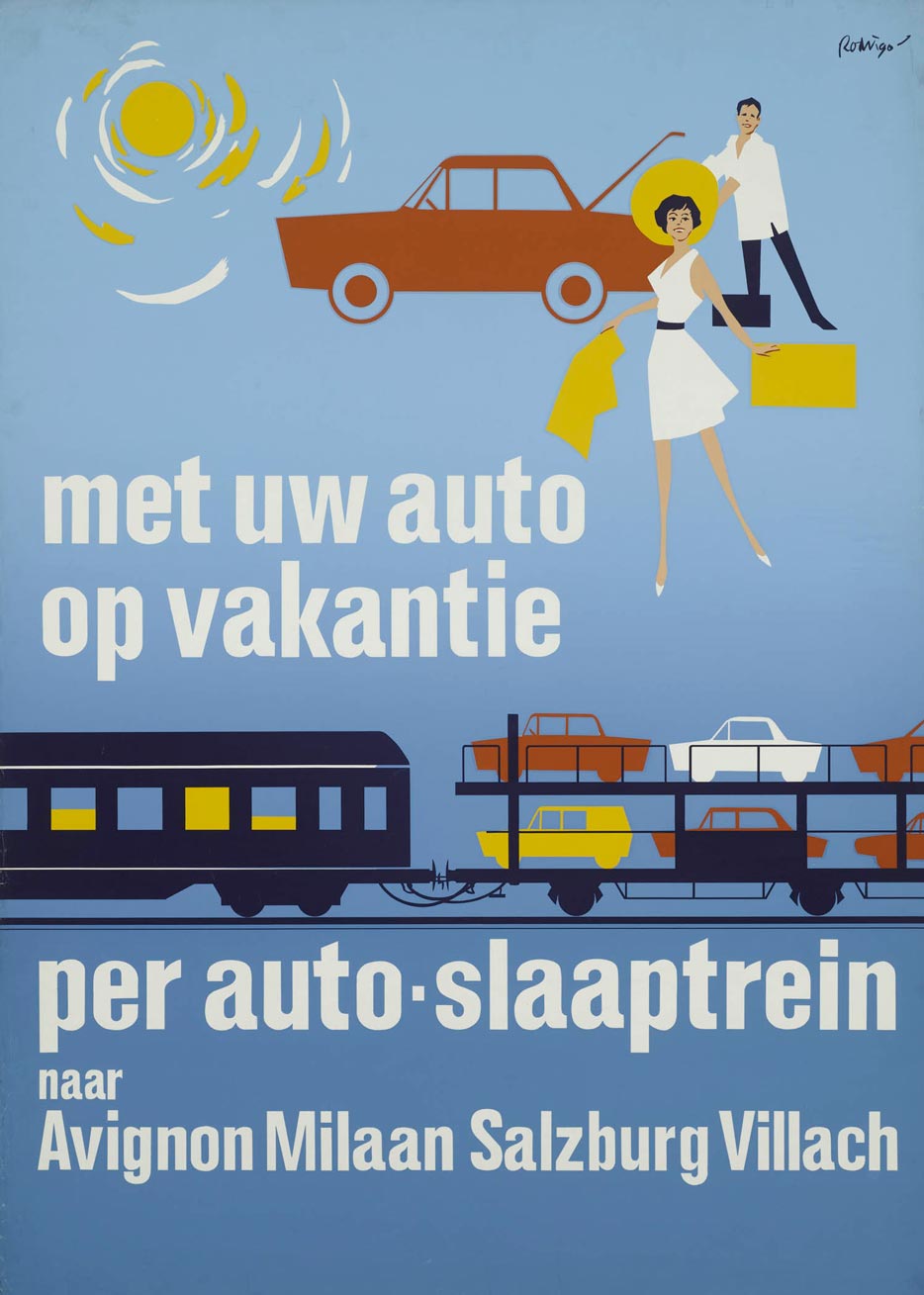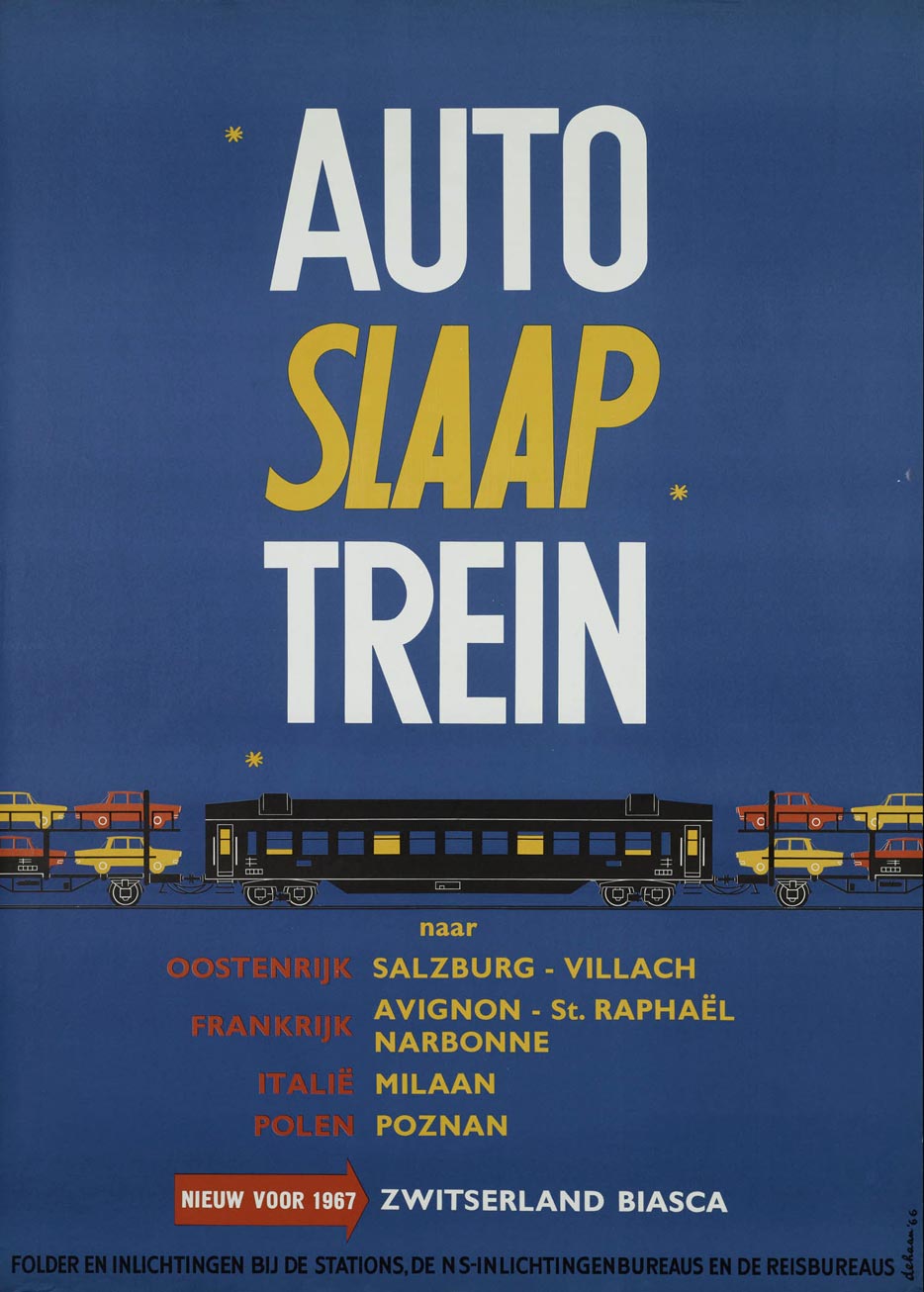Train your car
Posters for car sleeper expresses around 1960
 Nederlandse versie
Nederlandse versie
In the late 1950s Western European railway companies were looking for a response to the increase in car traffic and tourism. They introduced car sleeper expresses (Motorail trains) that enabled tourists to take their car with them to their holiday destination. Passengers could relax in sleeping and dining carriages while the railways were doing the heavy work.
Posters for the car sleeper trains — which ran only in summer — emphasized that a holiday feeling could start immediately, supported by puns and pictorial jokes such as a car in a suitcase. Although the costs were high, the car sleepers were a success. The decline came when cars and highways became better and air travel more affordable.
United Kingdom
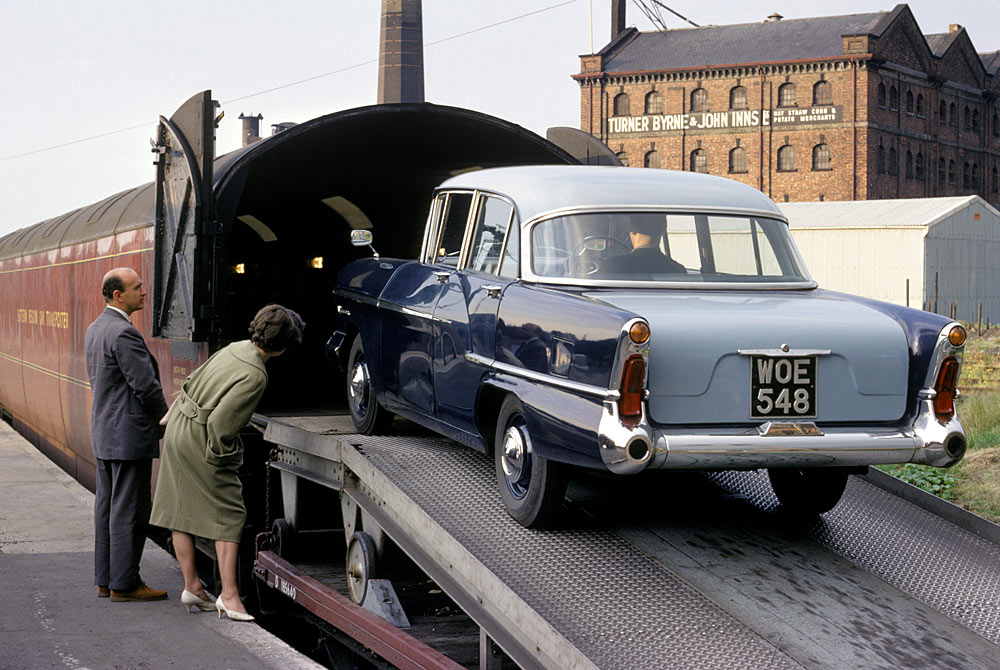
British Railways started the car sleeper expresses in 1955. The first one was the Car-Sleeper Limited between London and Perth in Scotland, followed by the Highland Car Sleeper from York to Inverness and the Western Country Car Sleeper between Newcastle and Exeter. From 1958 onwards an 'international' service was also available: the Continental Car Sleeper Service from Manchester to Dover with connection to the car ferry to Boulogne in France. Later on this train ran from Glasgow to Newhaven for the ferry to Dieppe.
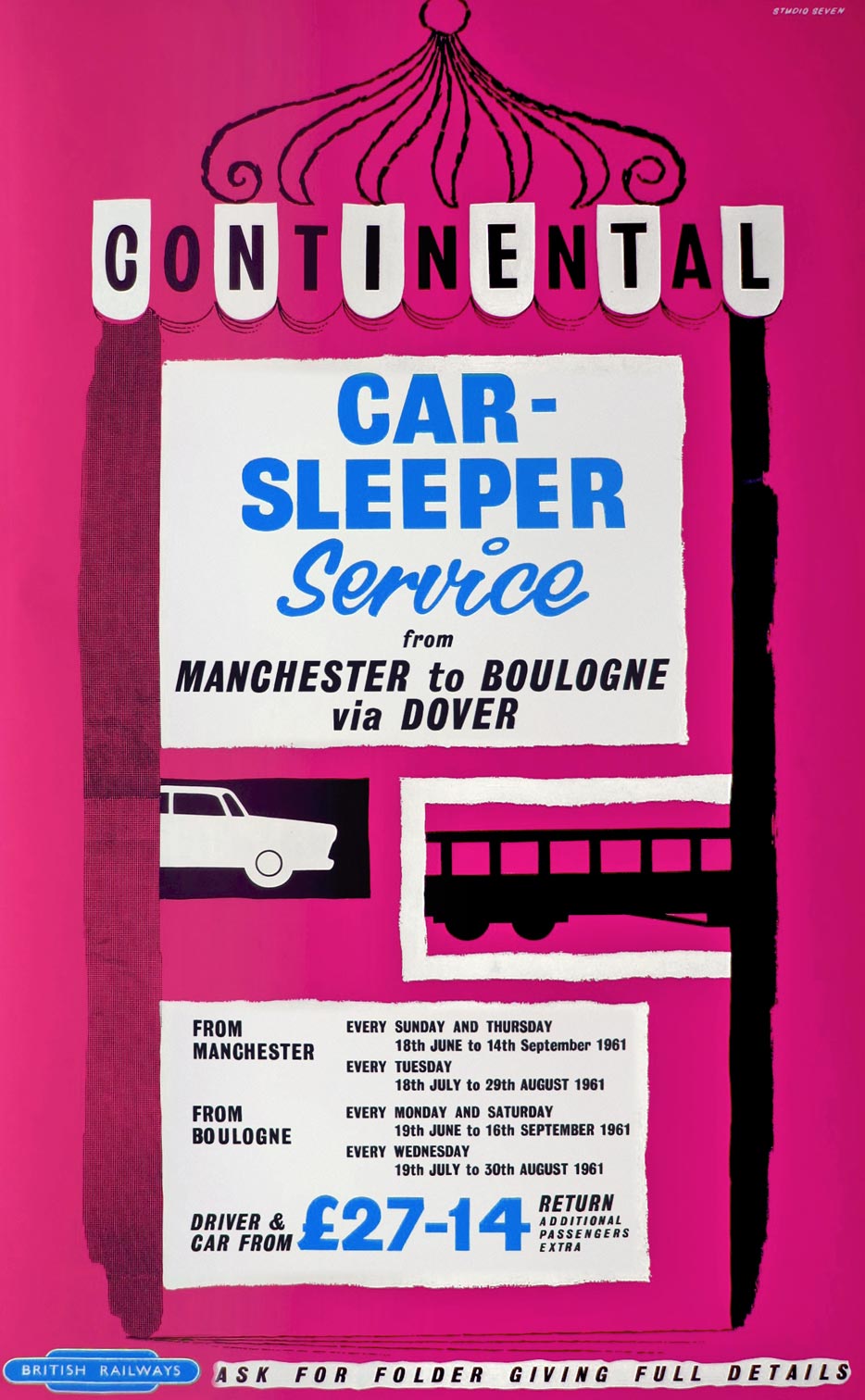
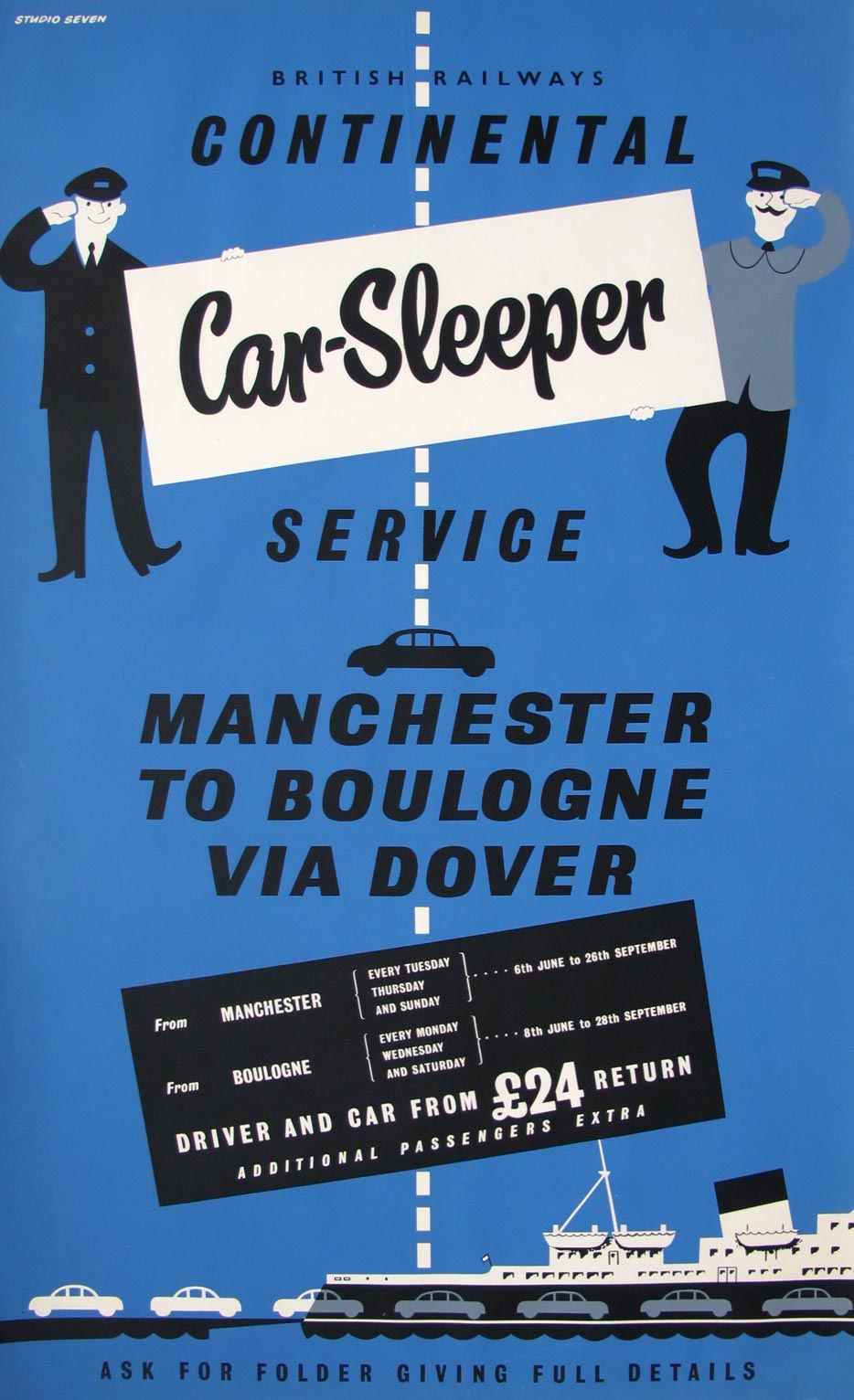
In 1966 the British car sleepers were given a new brand name: Motorail. The occasion was the opening of the Kensington Olympia terminal with three covered car loading platforms. The provisionally car-adapted London stations King's Cross, Marylebone and Holloway could not support the growth of traffic. A new type of railway cars was also introduced in 1966: the open double-decker Cartic, nicknamed 'carflats'. Until then British Railways had used closed car carriers which were loaded from the back.
Like thousands of other carefree motorists begin your 1961 holiday at a railway station. Make for the open road — by train. Climb into your sleeping birth and arrive fresh as a daisy to pick up your car at your destination the next morning.
There are three kinds of car-carrying services operated by British Railways. With the Car-Sleeper and Car-Carrier service passenger and car travel by the same train. With the Car-Tourist service passenger and car travel by separate trains, the car through the night and the passenger by day or night.
British Railways' advertisements and posters touted the relaxed way of traveling, with the convenience of a car at the travel destination. They used slogans such as 'Let British Railways do the long hard drive', 'Take your car off the road' and 'The relaxing way to start your motoring holiday'. One ad calculated the fuel consumption: 565 miles per gallon (1 liter per 240 kilometers)!
Belgium
The Belgian railways were one of the first to start a car sleeper express on the European mainland. It ran from Ostend to Munich from 30 June 1956 onwards. The connection was mainly used by British motorists arriving by ferry from Dover. The Ostende-Maritime station was fitted with a loading ramp. In addition automobiles could also be loaded at Schaarbeek (Brussels). During the first season 438 cars were transported, in 1963 the number was already 1,635.
The trains were composed of various day carriages, a Wagons-Lits sleeping car and ten 'garage cars'. These were converted two-axle boxcars, fitted with guide rails and foldable junctions in between. In their multilingual communication the Belgian railways used the names Auto Nachtexpress, Car Sleeper Express, and Train autos-couchettes. Around 1960 new expresses were added to Milan, Brig and Avignon, the latter also departing from the Liège (Bressoux) station.
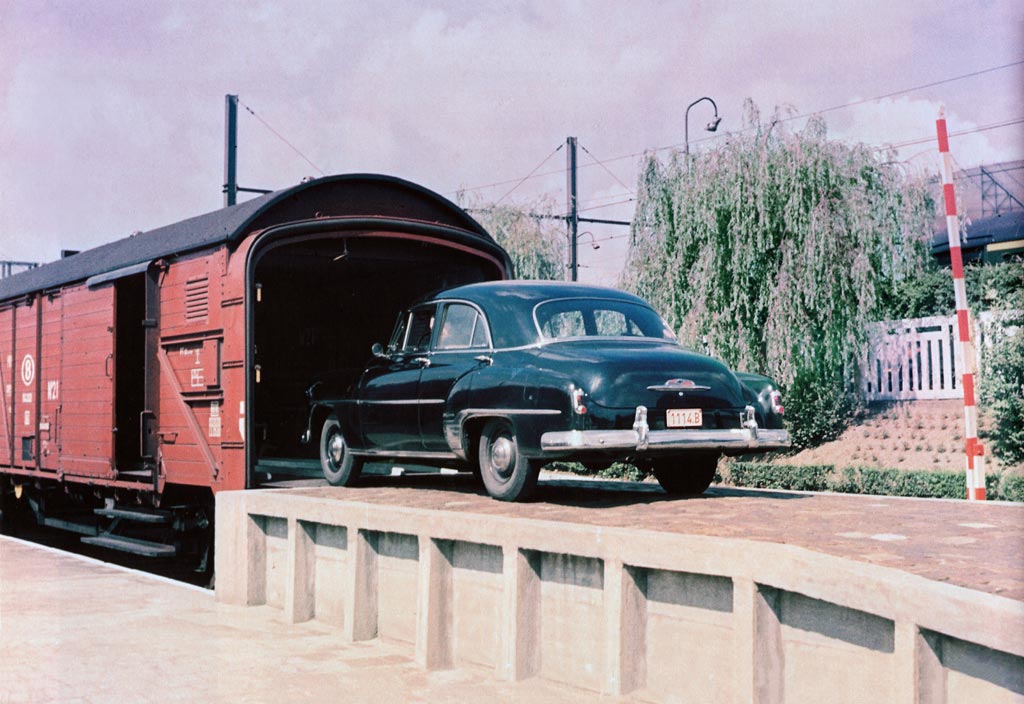
The car sleeper posters demonstrate the development of Belgian railway advertising in the 1960s. Capouillard (Gaston Bogaert, 1918-2008) was still designing in a traditional style in 1960, but with some playful elements. The 1964 poster by Paul Funken (1932-) was already much more abstract and the one by André Pasture (1928-2006) a few years later was almost minimalist. The posters also show that closed boxcars were soon replaced by open double-deck carriers.

Germany
Apart from the car train from Ostend to Munich, the first German car sleeper express ran on 25 June 1956 from Hamburg to Chiasso on the Swiss-Italian border. This train was called 'Komet' and the service was branded 'Auto im Reisezug' (ARZ). During the first season 930 automobiles were transported. Thanks to the Wirtschaftswunder more and more Germans could afford a car and a holiday abroad, incrementing the number of transported vehicles to 80,000 in 1969. Meanwhile car sleeper expresses to Avignon, Milan and Verona were added.
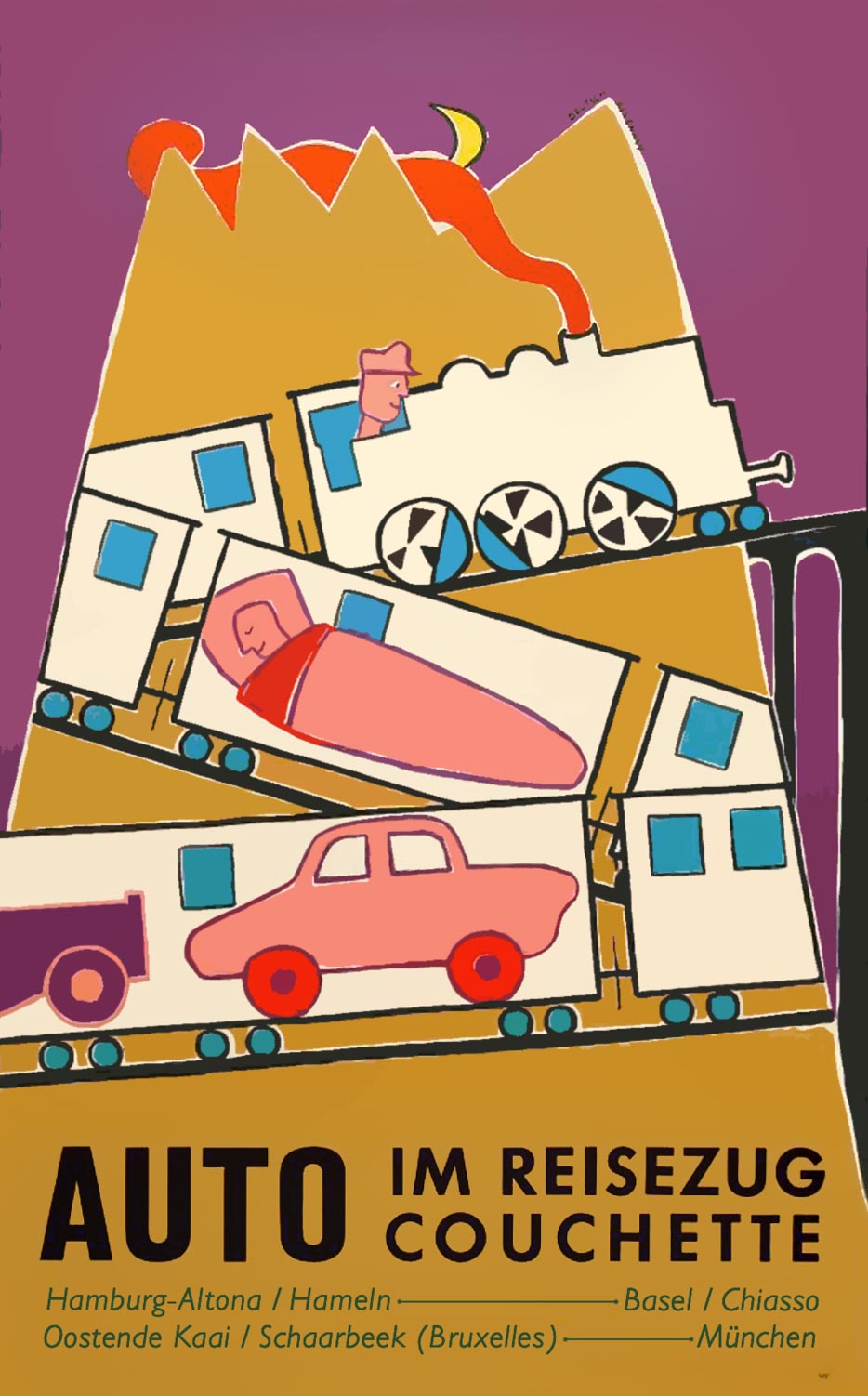

In 1956 special closed car carrier wagons had been built for the expresses: Doppelstockwagen für den Gepäck- und Autotransport. Two floors offered space for eight cars: five on top and three below. They were loaded sideways from the platform using built-in tilting hoists. From 1961 onwards the Deutsche Bundesbahn used new double-decker open carriers, fitted with collapsible junctions that allowed cars to enter from an end-loading ramp. During the 1973 oil crisis 185,000 vehicles were transported, a peak which was also a turning point.
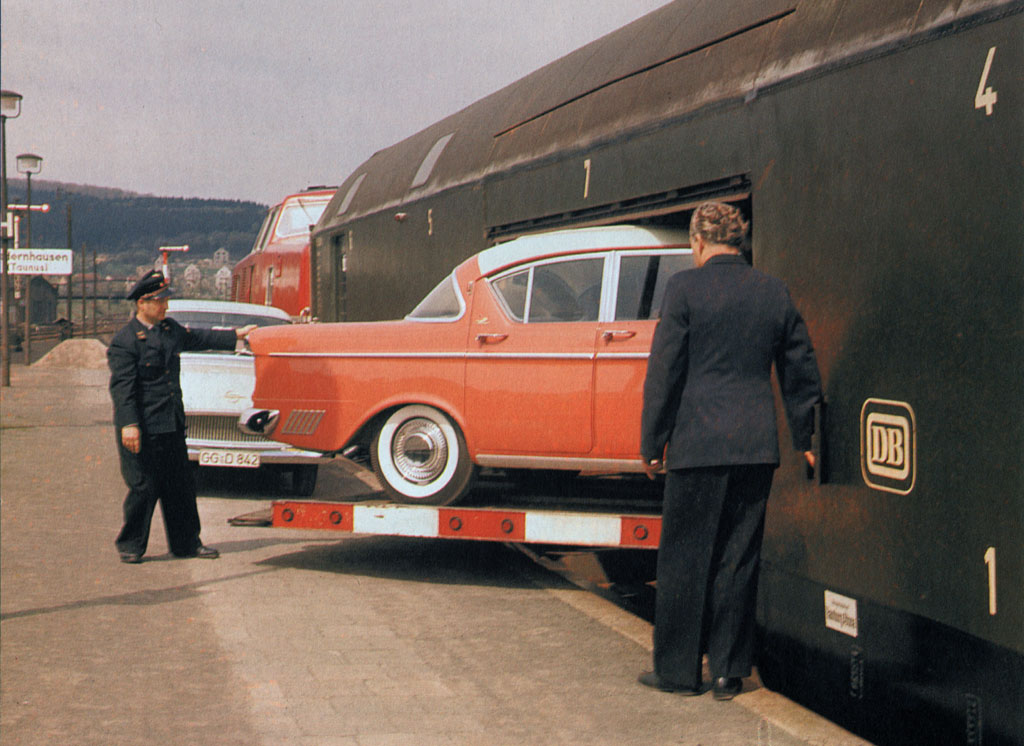
Posters promoting the 'Auto im Reisezug', designed for the German railways by Hans Schmandt (1920-1993) and others, literally pictured cars as luggage in a suitcase or the pocket of a jacket. The posters showed passengers relaxing, reading the newspaper or sleeping while the train raced along.
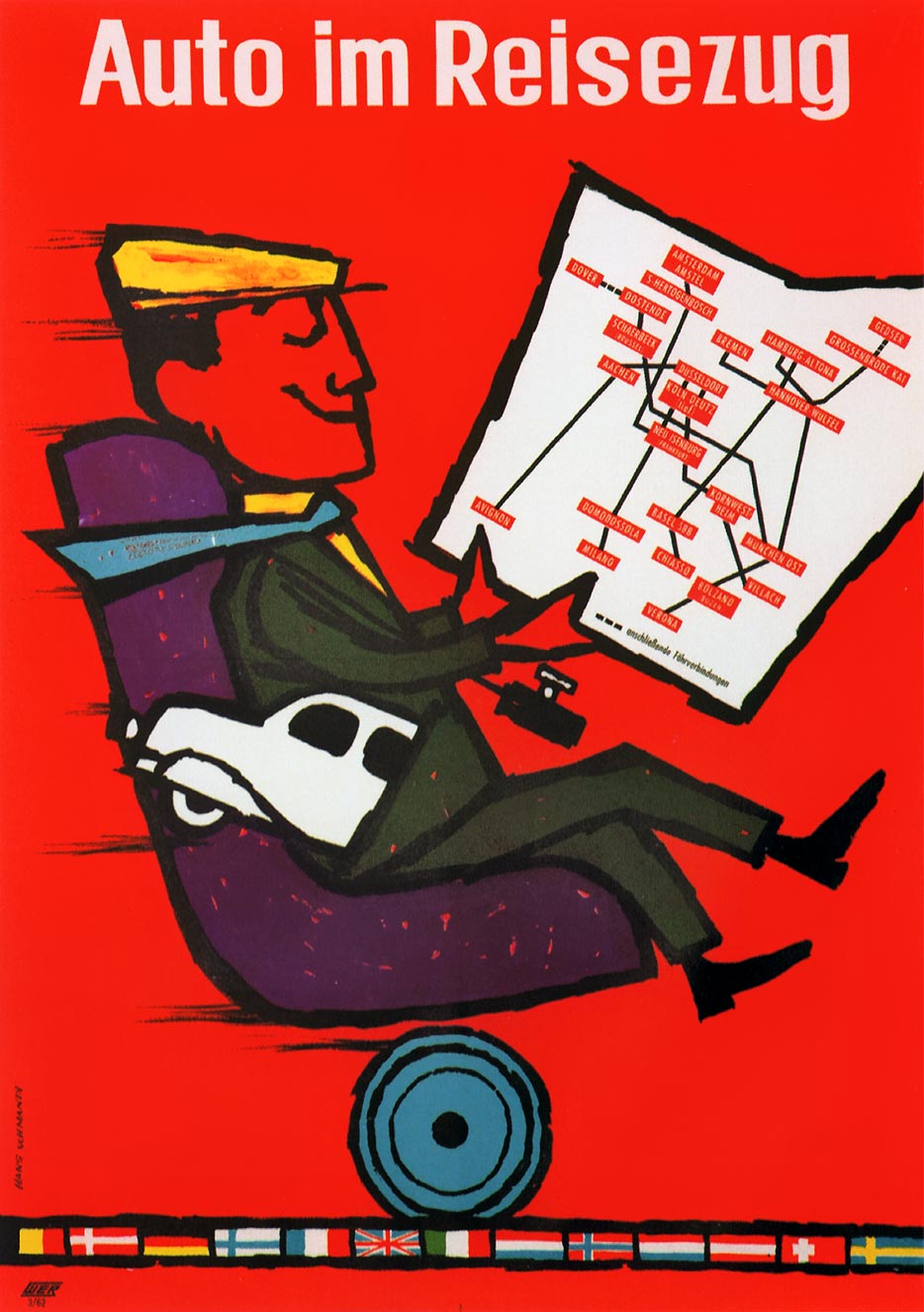
France

The first French car sleeper express started on 31 May 1957 between Boulogne and Lyon. The Train Auto-Couchettes (TAC) was a collaboration between SNCF and Wagons-Lits, which provided sleeping and dining cars. During the first summer season 6,000 cars were transported. The number of connections grew rapidly from two in 1959 to twelve in 1962. Car trains left from Paris to destinations including Avignon, Grenoble, Narbonne, Nice and Toulon. In addition to domestic trains, car sleepers from Hamburg, Amsterdam and Brussels arrived at Avignon-Fontcouverte.

The French Railways used double deck open wagons STVA from the Société de Transports de Véhicules Automobiles. This SNCF subsidiary distributed new cars from the factories. Around 1960, apart from the ferries to Boulogne and Calais, British motorists could also use an air connection! Bristol Freighter planes took the cars from Lydd (Kent) to Etaples-Le Touquet, where they could transfer to a car sleeper express for Avignon and Narbonne.

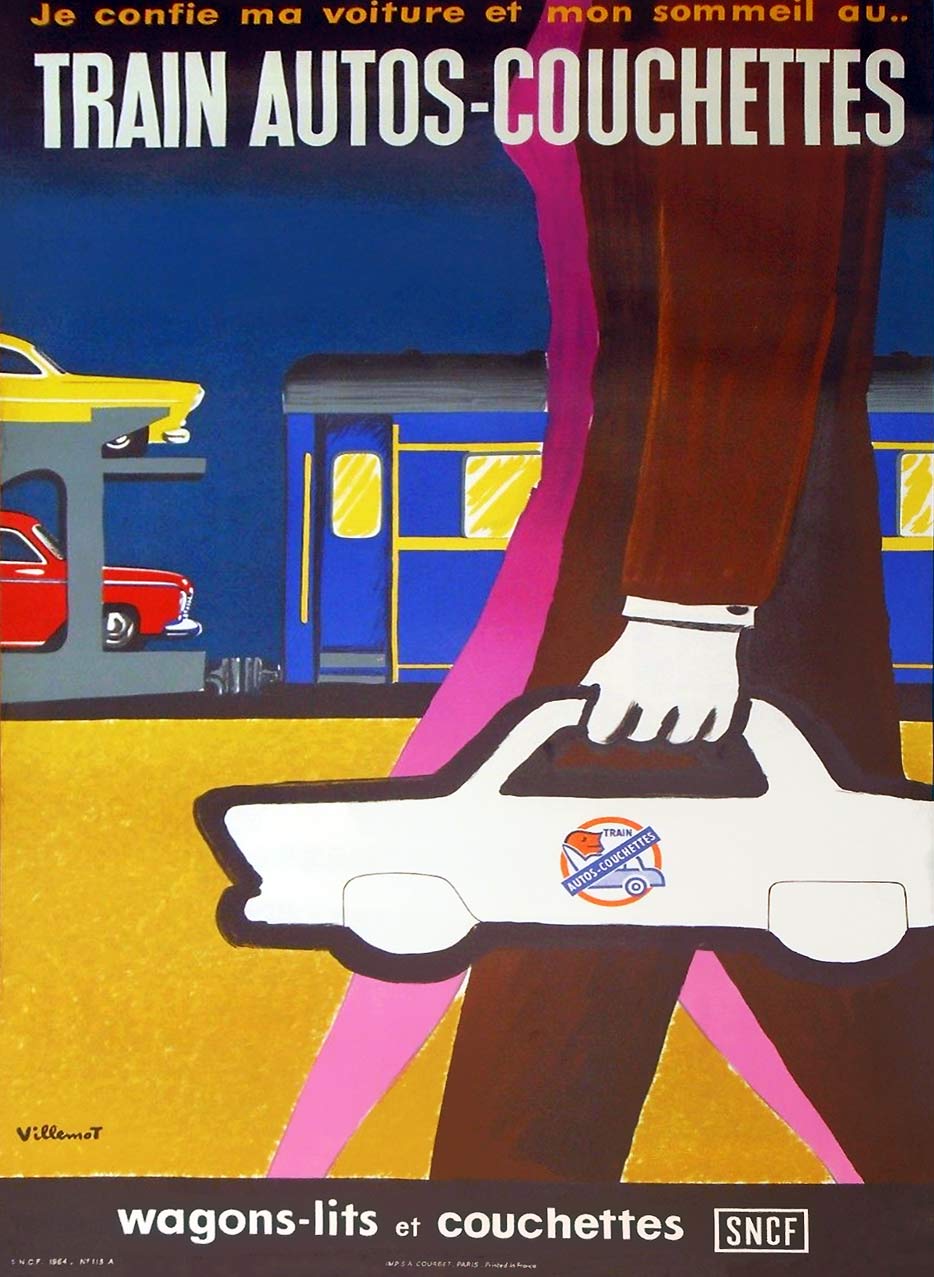
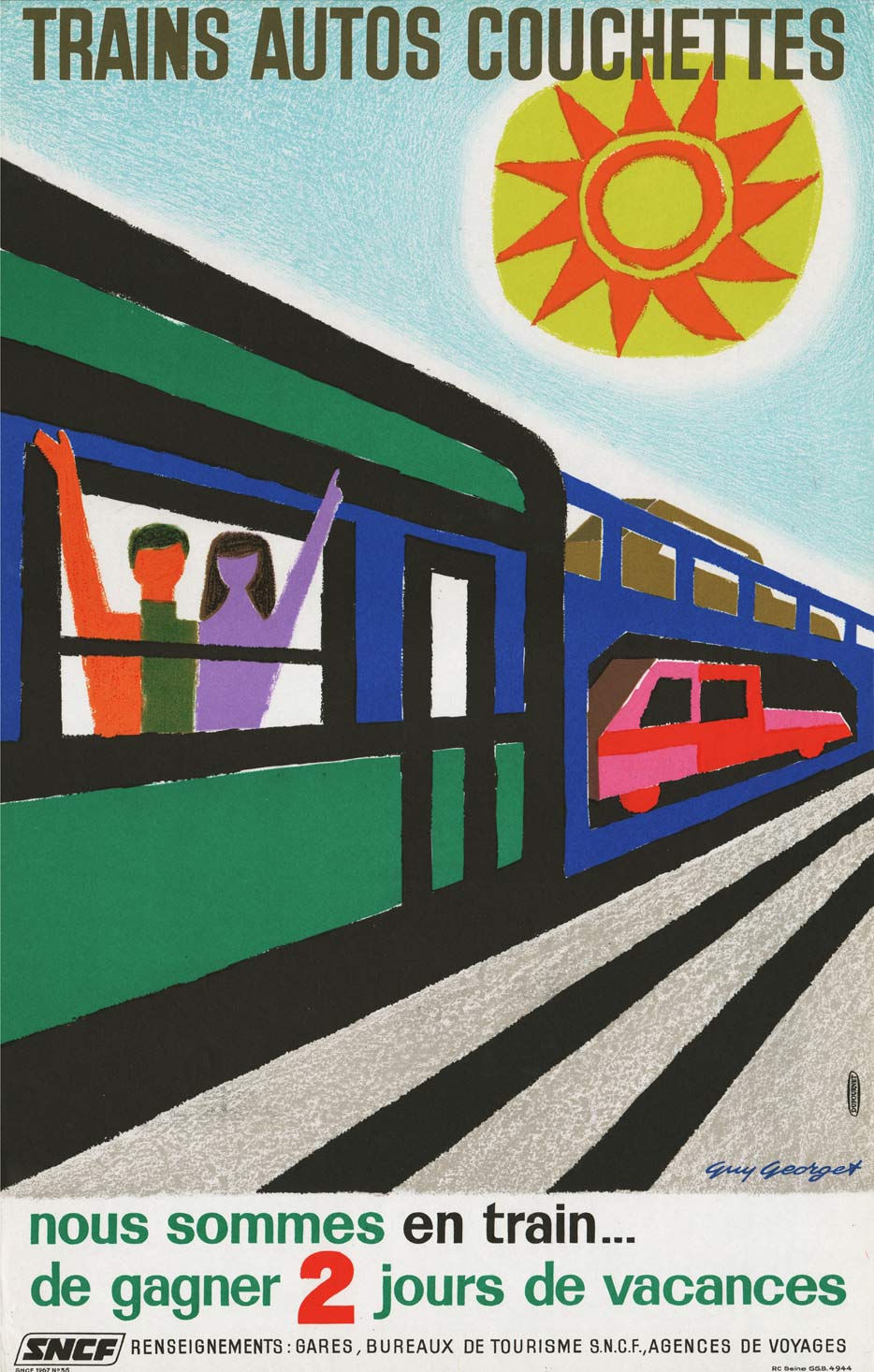
French posters for car sleepers had several themes. Marine painter Albert Brenet (1903-2005) showed the high service level by depicting a lot of staff on the platform. Bernard Villemot (1911-1989), who mainly designed product posters, literally pictured a car as hand luggage. Guy Georget (1911-1992), who always managed to adapt his style to the spirit of the time, emphasized the freedom offered by car sleeper services.

Day and Night, on the train you are always free to move. Traveling relaxed, your only worry is to think about what you will do tomorrow. Lying down comfortably, you let someone else drive. You sleep with your family, just as at home. You dream that you are on a road without traffic jams, without rain, without ice — you are on holiday already. And in the morning, after showering and breakfast, you find yourself back at the steering wheel. With a clear mind you start your activities or make the last kilometers to your destination.
Whether you go to the sea, the mountains or the countryside, you will not waste any holiday time while traveling at night in a car sleeper express. No more cumbersome long roads in summer; no more slippery roads and fog in winter. You make the journey while sleeping and having breakfast. After driving the last part of the trip in your own car you arrive full of energy, fresh to start the holidays, to enjoy the pleasures of the sea or to put on your skis. Meanwhile your friends, who came all the way by car, arrive tired in the evening.
The Netherlands
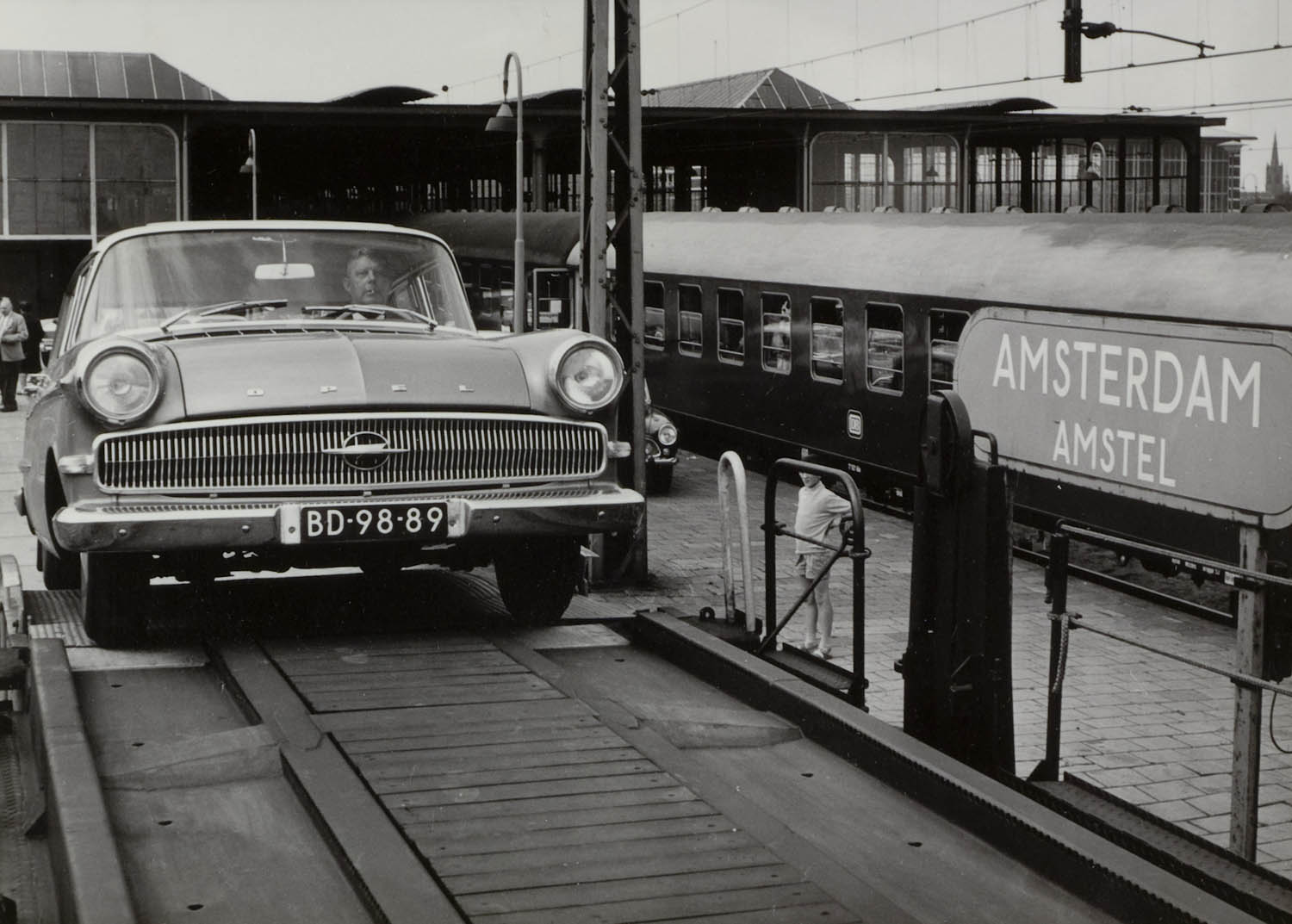
The Dutch Railways were one of the last in Western Europe to start a car sleeper service. On 30 June 1960 the first autoslaaptrein left Amsterdam for Avignon. This connection was extended to Narbonne and St Raphael in 1966. Meanwhile, car trains from Amsterdam to Austria (Salzburg and Villach) and Italy (Milan) had been added. Remarkable in the late 1960s was a car sleeper service to Poznan in Poland. In 1970 the 100,000th car was transferred from Amsterdam to Narbonne.
Initially the car sleeper trains departed from Amsterdam Amstel station. The cars entered the station through a side entrance and reached the platform via an underpass and a ramp. The cars could enter the train at the rear on a terminal track, or via a side loader on the platform. In 1963 the harbor station of Hook of Holland also obtained a loading facility. From 1972 onwards 's-Hertogenbosch station was the only Dutch terminal for car sleeper expresses.
The posters by the in-house Dutch Railways designers Jan Rodrigo (1921-2013) and Jan de Haan (1917-1975) had a blue background, referring to either night travel or the sunny destinations. Many of the cars shown in silhouette are of the popular Dutch DAF brand, though car sleepers were mostly used by owners of more expensive cars because of the high travel costs.

